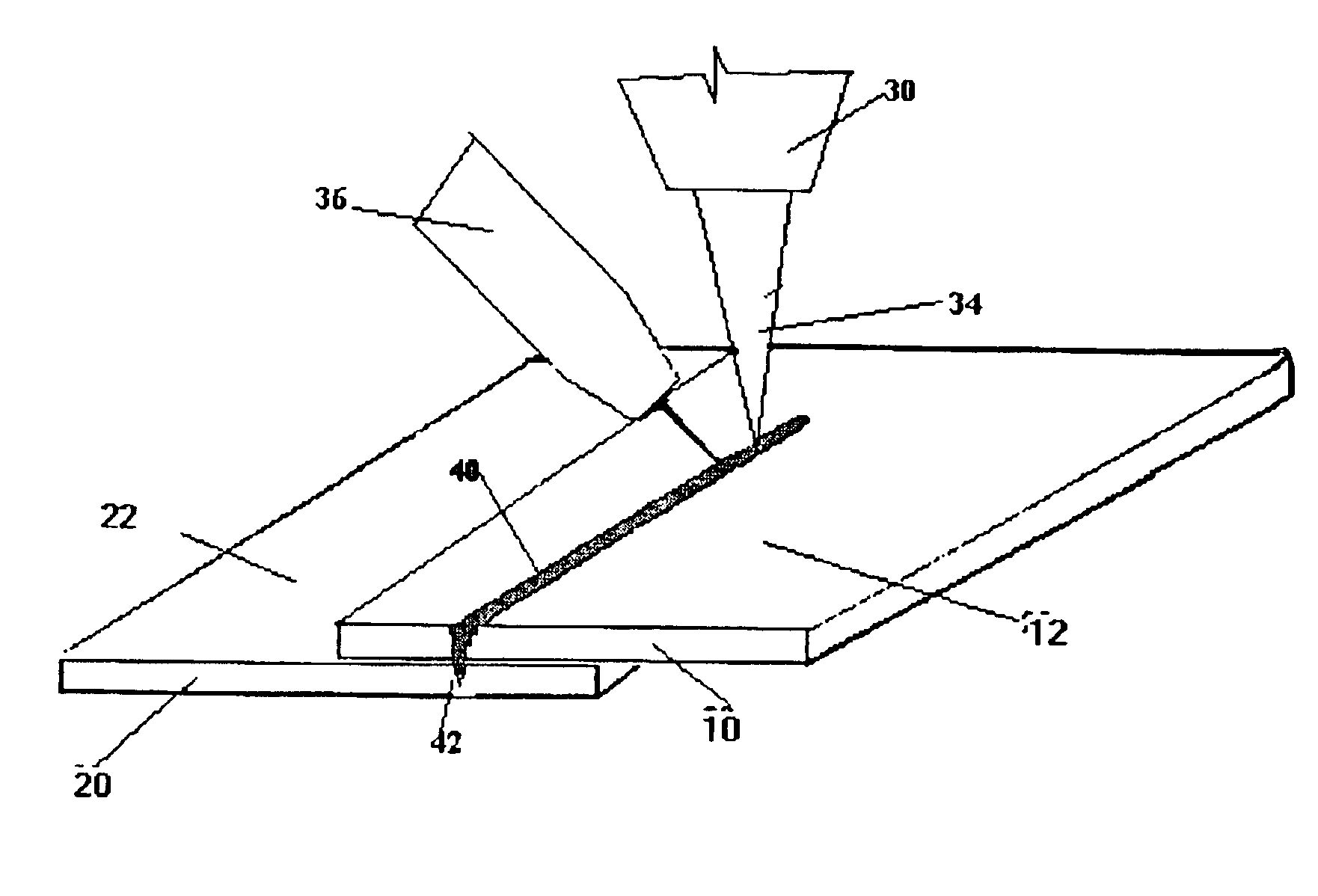Method for laser welding of metal
a laser welding and metal technology, applied in the direction of welding apparatus, manufacturing tools, transportation and packaging, etc., can solve the problems of poor weld surface conditions such as undercutting, underfilling and voids, and excessive spatter
- Summary
- Abstract
- Description
- Claims
- Application Information
AI Technical Summary
Benefits of technology
Problems solved by technology
Method used
Image
Examples
Embodiment Construction
[0023]As shown in FIG. 1., a first sheet of metal 10 is to be joined with a second sheet of metal 20. The first sheet of metal 10 is arranged on top of the second sheet of metal 20. Both the first sheet of metal 10 and the second sheet of metal 20 include a protective layer 12, 22 made of a low-vaporizing-temperature material. One example of such a material is zinc.
[0024]While FIG. 1 indicates that metal sheet 10 and metal sheet 20 are separate sheets, it should be appreciated that for the purposes of this invention, the two metal sheets may also consist of a single sheet bent or wrapped to resemble some form of a U-shape.
[0025]Furthermore, the attached drawings illustrate that a single protective layer 12, 22 is provided on the top surface of both metal sheets 10, 20. Typical thickness for a protective layer of zinc placed onto a metal sheet ranges from zero to approximately 7.5 microns.
[0026]The particular location of the protective layers 12 and 22 as indicated in FIGS. 1 and 2 b...
PUM
| Property | Measurement | Unit |
|---|---|---|
| thickness | aaaaa | aaaaa |
| temperature | aaaaa | aaaaa |
| pressure | aaaaa | aaaaa |
Abstract
Description
Claims
Application Information
 Login to View More
Login to View More - R&D
- Intellectual Property
- Life Sciences
- Materials
- Tech Scout
- Unparalleled Data Quality
- Higher Quality Content
- 60% Fewer Hallucinations
Browse by: Latest US Patents, China's latest patents, Technical Efficacy Thesaurus, Application Domain, Technology Topic, Popular Technical Reports.
© 2025 PatSnap. All rights reserved.Legal|Privacy policy|Modern Slavery Act Transparency Statement|Sitemap|About US| Contact US: help@patsnap.com



